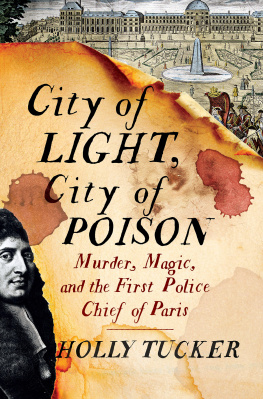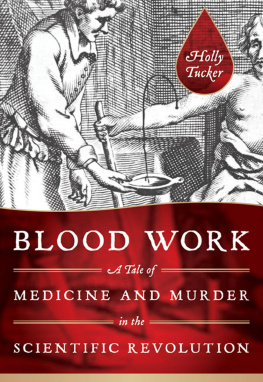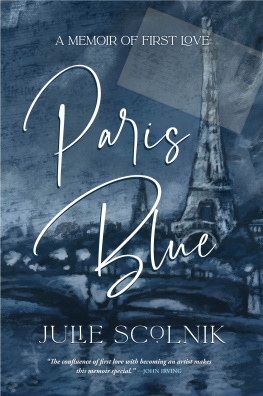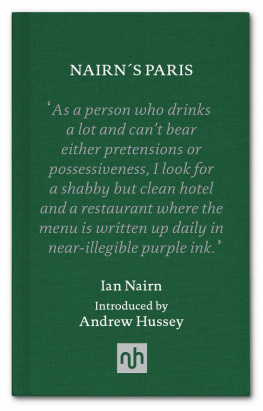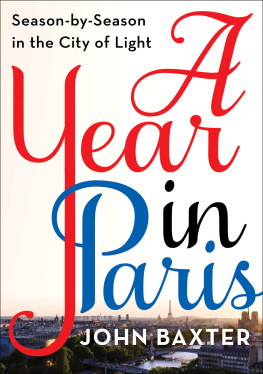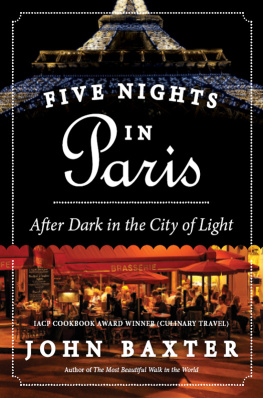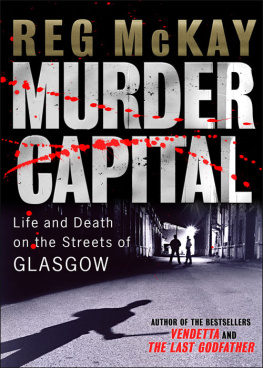Holly Tucker - City of Light, City of Poison: Murder, Magic, and the First Police Chief of Paris
Here you can read online Holly Tucker - City of Light, City of Poison: Murder, Magic, and the First Police Chief of Paris full text of the book (entire story) in english for free. Download pdf and epub, get meaning, cover and reviews about this ebook. year: 2017, publisher: W. W. Norton & Company, genre: Non-fiction. Description of the work, (preface) as well as reviews are available. Best literature library LitArk.com created for fans of good reading and offers a wide selection of genres:
Romance novel
Science fiction
Adventure
Detective
Science
History
Home and family
Prose
Art
Politics
Computer
Non-fiction
Religion
Business
Children
Humor
Choose a favorite category and find really read worthwhile books. Enjoy immersion in the world of imagination, feel the emotions of the characters or learn something new for yourself, make an fascinating discovery.
- Book:City of Light, City of Poison: Murder, Magic, and the First Police Chief of Paris
- Author:
- Publisher:W. W. Norton & Company
- Genre:
- Year:2017
- Rating:5 / 5
- Favourites:Add to favourites
- Your mark:
City of Light, City of Poison: Murder, Magic, and the First Police Chief of Paris: summary, description and annotation
We offer to read an annotation, description, summary or preface (depends on what the author of the book "City of Light, City of Poison: Murder, Magic, and the First Police Chief of Paris" wrote himself). If you haven't found the necessary information about the book — write in the comments, we will try to find it.
A fierce tale of conspiracy and retribution Thanks to Tuckers sympathetic necromancy and her luscious resurrection of everyday detail, even in gilded palaces the human psyche seems familiarly deceitful and self-justifying. Michael Sims, author of The Story of Charlottes Web and Arthur and Sherlock
Appointed to conquer the crime capital of the world, the first police chief of Paris faces an epidemic of murder in the late 1600s. Assigned by Louis XIV, Nicolas de La Reynie begins by clearing the streets of filth and installing lanterns throughout Paris, turning it into the City of Light.
The fearless La Reynie pursues criminals through the labyrinthine neighborhoods of the city. He unearths a tightly knit cabal of poisoners, witches, and renegade priests. As he exposes their unholy work, he soon learns that no one is safe from black magicnot even the Sun King. In a world where a royal glance can turn success into disgrace, the distance between the quietly back-stabbing world of the kings court and the criminal underground proves disturbingly short. Nobles settle scores by employing witches to craft poisons and by hiring priests to perform dark rituals in Pariss most illustrious churches and cathedrals.
As La Reynie continues his investigations, he is haunted by a single question: Could Louiss mistresses could be involved in such nefarious plots? The pragmatic and principled La Reynie must decide just how far he will go to protect his king.
From secret courtrooms to torture chambers, City of Light, City of Poison is a gripping true-crime tale of deception and murder. Based on thousands of pages of court transcripts and La Reynies compulsive note-taking, as well as on letters and diaries, Tuckers riveting narrative makes the fascinating, real-life characters breathe on the page.
8 pages of illustrations; 1 mapHolly Tucker: author's other books
Who wrote City of Light, City of Poison: Murder, Magic, and the First Police Chief of Paris? Find out the surname, the name of the author of the book and a list of all author's works by series.

